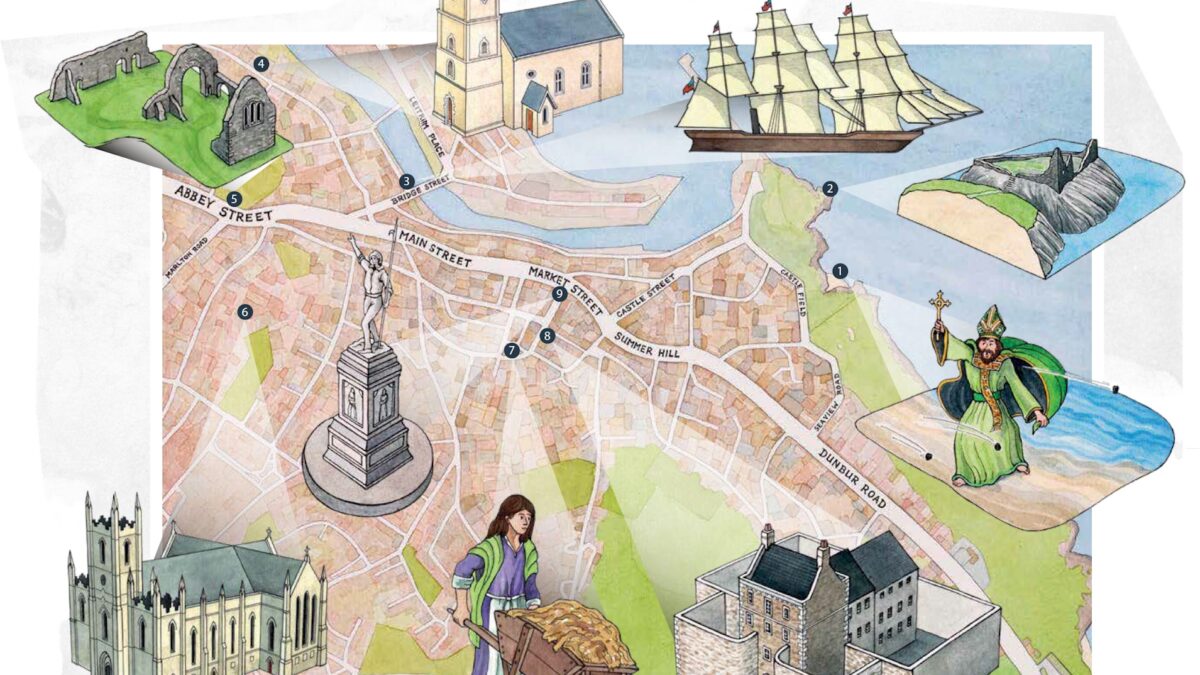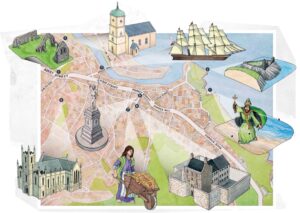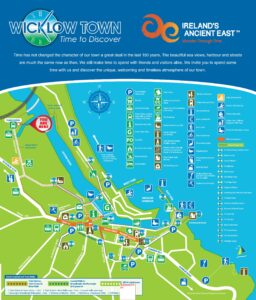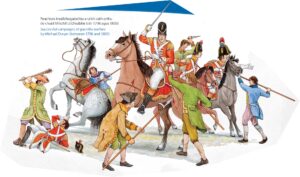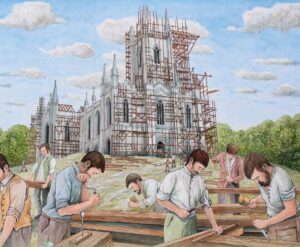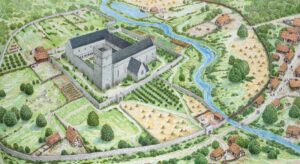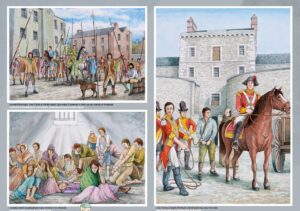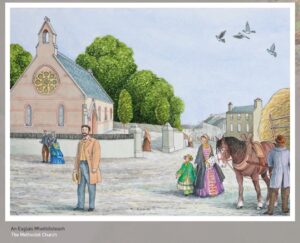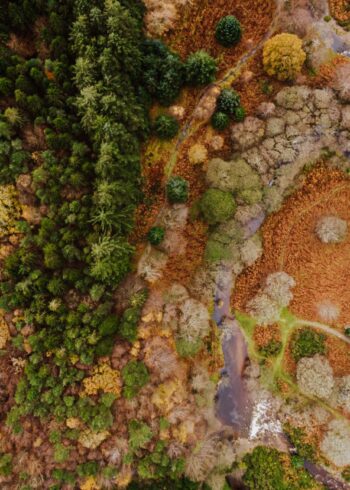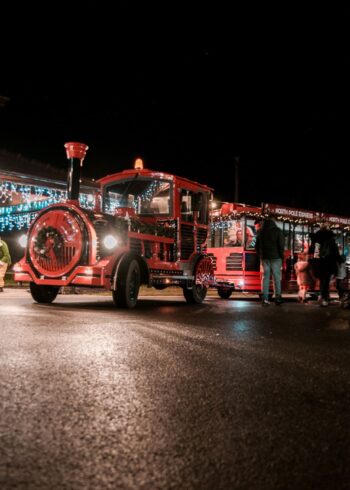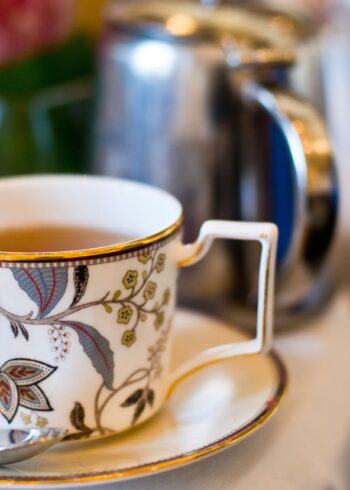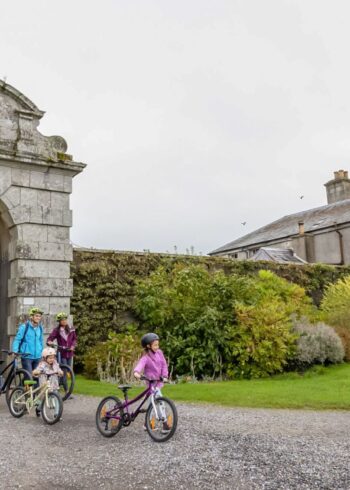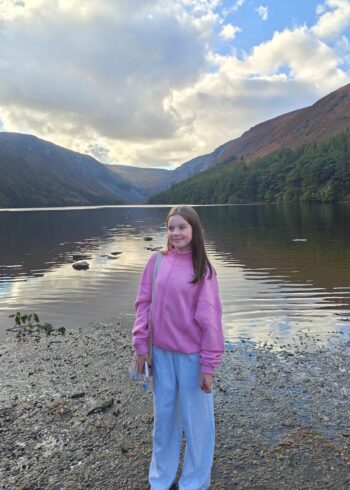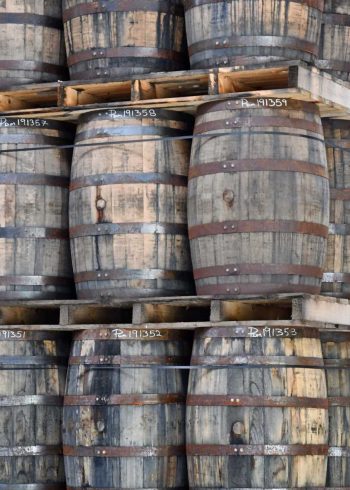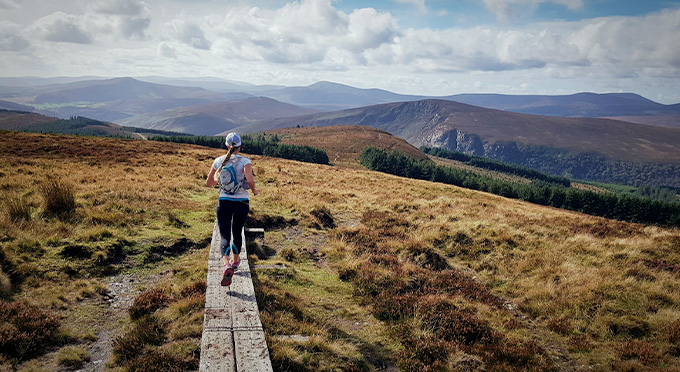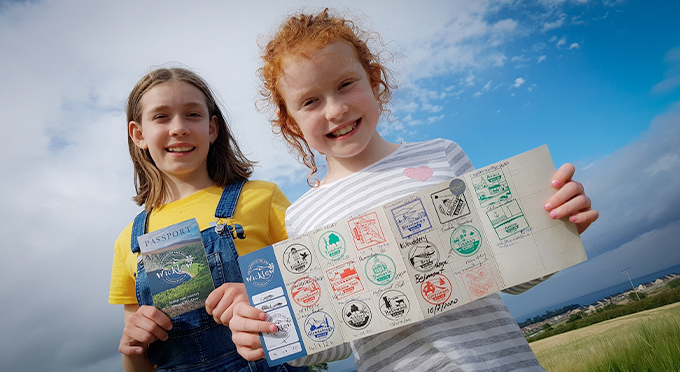The site on which Wicklow Town now stands has been a settlement for thousands of years because of its ideal location and the abundance of food both in the sea and on land. Wicklow’s Heritage Trail covers our town’s history from
the arrival of St. Patrick and his monks at Travelhawk beach in 432 up to the end of the Civil War and the establishment
of the Irish Free State in 1922.
Discover Wicklow Town’s rich history through a series of information panels located throughout the town. Sites include:
The past 1,500 years has seen the development of Wicklow from a tiny settlement in Christian times to the unique and
historical town we have today with its beautiful, picturesque 19th century harbour. Find out about the earliest
settlement of Inbhear Dee to the coming of Christianity with the settlements change of name to Cill Mhantáin (The
Church of Manntan) and ultimately, the arrival and settlement here of the Vikings with the result that the
town became known as Wicklow.
The influence of the Normans in the late 12th century, with the construction of the Black Castle, played a large part in
the town’s history during the Middle Ages. The constant conflict between the Anglo-Normans and the native Wicklow
clans, the O’Byrne’s and O’Toole’s, led to the destruction of the castle in 1645. Following the Penal Laws, Wicklow Gaol
was constructed (1702-’10) and was a busy overcrowded place in the aftermath of the 1798 Rebellion and the Great
Famine (1845-’50).
The 19th century saw a huge growth in the industry and development of the town we have today. During this time Wicklow’s most famous son, Captain Robert Halpin, became famous worldwide for his part in laying the Trans-Atlantic
telegraph cable in 1866. The early part of the 20th century saw Ireland win its fight for independence only to be followed by the bitterness of the Civil War.
Today Wicklow Town welcomes all our visitors, with the promise that you will enjoy spending a number of hours
rambling through our narrow streets, observing our historic sites and appreciating the beauty of our coastline.
